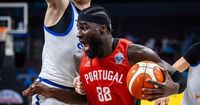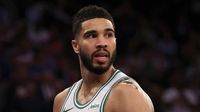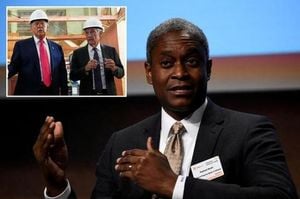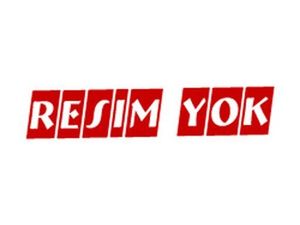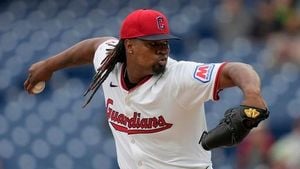Boston Celtics fans, brace yourselves: the 2025-26 NBA season promises to be one of the most unpredictable in recent memory. With a frontcourt in flux and a roster reshaped by injuries and departures, the Celtics are entering a transition period that’s left both supporters and league observers scratching their heads. The big question? Who will step up in a frontcourt that’s suddenly light on experience but heavy on opportunity.
The drama began on May 12, 2025, a date that will linger painfully for Celtics faithful. That night, star forward Jayson Tatum ruptured his Achilles, abruptly ending not just Boston’s playoff hopes, but dousing any realistic championship dreams for the next season as well. The ripple effect was immediate and severe. Kristaps Porzingis and Jrue Holiday were traded, Luke Kornet chased a lucrative deal with the San Antonio Spurs, and veteran anchor Al Horford is widely expected to join the Golden State Warriors if the Jonathan Kuminga situation resolves itself. Even Marcus Smart, the heart and soul of Boston’s defense for nine seasons, opted for a new challenge with the Los Angeles Lakers after a buyout from the Washington Wizards.
The result? A Celtics roster that looks almost nothing like the one that entered last spring as an Eastern Conference favorite. According to Celtics president of basketball operations Brad Stevens, "That group will not be the group that people will single out based on paper, on what they’ve done with their careers thus far, as our strongest position. But it’s up to them to prove it otherwise." The frontcourt, in particular, is a patchwork of potential and question marks.
Enter Neemias Queta. The 26-year-old Portuguese center, who spent last season as a reserve, has been thrust from the fourth spot on the depth chart to the likely starter. Queta’s NBA stats have been modest—he averaged 5.0 points, 3.8 rebounds, and 0.7 blocks in 13.9 minutes per game last season for Boston—but he’s shown flashes of a much higher ceiling. His per-36 numbers (12.9 points, 9.8 rebounds, 1.8 blocks) hint at untapped potential, especially now that he’s finally getting his shot to be the man in the middle.
If Celtics fans needed a reason for optimism, Queta’s recent EuroBasket debut provided it in spades. On August 27, 2025, he exploded for 23 points, 18 rebounds, four blocks, and two steals to lead Portugal past Czechia, 62-50. Not only was it Portugal’s first EuroBasket win since 2007, but Queta also drilled his first professional three-pointer, opening the game with a confident straightaway triple. "I know he had like 23 (points), but we still didn’t give him the ball enough," Portugal teammate Travante Williams remarked via FIBA’s game recap. "I think if we were to give him the ball like six more possessions, he’d have 37 points or something. He’s a big-time player, EuroBasket is the perfect place for him to show his talent and sometimes it doesn’t get recognized in the NBA. But he’s playing great. That’s our guy. We want to go through him."
Queta’s dominance wasn’t just a statistical anomaly. He became the first player since 1995 to post at least 20 points and 15 rebounds in their EuroBasket debut, and he did it with remarkable efficiency—11-of-15 from the field, no significant foul trouble, and a plus-21 in 31 minutes. Granted, Czechia’s roster boasted just one NBA player (Atlanta’s Vit Krejci), so Queta’s upcoming EuroBasket matchups against Serbia’s Nikola Jokic, Turkey’s Alperen Sengun, and Latvia’s Kristaps Porzingis will provide a more telling barometer of his readiness for an expanded NBA role.
Back in Boston, the frontcourt picture is a mosaic of newcomers and unproven talent. Chris Boucher, acquired from Toronto, is the lone proven NBA big man on the roster. Offseason additions Luka Garza and Josh Minott, along with second-round pick Amari Williams, offer upside but little in the way of guarantees. Xavier Tillman, largely a role player last season, could see his minutes increase as head coach Joe Mazzulla experiments with different lineups in training camp.
Neemias Queta isn’t the only Celtic with something to prove. Last season, rookie Amari Williams showed flashes in college, and the team is hoping he can translate that potential to the pros. Meanwhile, Luka Garza and Josh Minott, signed for a combined $5.2 million annually, are fighting for rotation spots. As Brad Stevens put it, "It’s up to them to prove it otherwise." The challenge is clear: Boston’s frontcourt, once a strength, is now a battleground for minutes and roles.
And then there’s the Ben Simmons question. The 29-year-old former All-Star, who split last season between the Brooklyn Nets and Los Angeles Clippers, is reportedly on Boston’s radar as a low-risk reclamation project. Simmons averaged 5.0 points, 4.7 rebounds, and 5.6 assists in 25 minutes per game last year—a far cry from his Philadelphia 76ers peak (15.9 points, 7.9 rebounds, 7.7 assists, and three consecutive All-Star nods). Still, his defensive versatility, playmaking, and size could help stabilize a shaky rotation. The Celtics don’t need Simmons to be a superstar again; they just need him to be reliable, versatile, and available. As one local columnist put it, "Given the state of their roster, that’s a gamble worth making."
Financial flexibility is also a factor. The Celtics, who spent above the second-apron salary cap line in two consecutive seasons, faced tough choices due to new CBA penalties. By late August, Boston was $7.4 million below the second apron after signing Garza and Minott, but the moves left little room for additional spending. Had Tatum stayed healthy, it’s possible the team would have retained Al Horford or even brought Marcus Smart back on a mid-level deal. Instead, the roster has been overhauled, and the fanbase is divided between hoping for a surprise playoff push or tanking for a top pick in the 2026 NBA Draft.
Looking ahead, the Celtics’ season will hinge on the development of their young bigs and the ability of role players to step up in expanded roles. Queta’s EuroBasket heroics offer a tantalizing glimpse of what he could bring to Boston if given the chance. But with the NBA’s best big men looming on the schedule, and with Simmons potentially in the mix, nothing is guaranteed.
As training camp approaches and the frontcourt competition heats up, one thing is certain: this Celtics squad is entering a new era, one defined by uncertainty, opportunity, and the hope that a new star might just be waiting in the wings. Whether Neemias Queta or another young Celtic can seize the moment remains to be seen—but the stage is set for one of the most intriguing storylines in Boston sports this fall.
